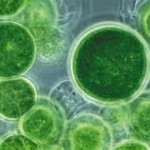The Philippine Agriculture, Aquatic and Natural Resources Research and Development (PCAARRD) released P10 million (US$ 250,000) to start off the National Aquafeeds Research and Development Program.
The feeds will come in various forms, namely: algal paste, nutrient concentrates, and as floating and sinking pellets. These will be field tested on milkfish, shrimps, and tilapia.
As this develop, about 60 species of microalgae had already been screened for food/aquaculture.
A five year plan road map was initiated through the Algae Research and Commercialization Master Plan (ARCMP) for developing commercial uses for Philippine strains of micro-algae.
The University of the Philippines (UP) Los Baños and UP in the Visayas are working with the Bohol Island State University to develop feed formulations using microalgae, seaweeds and seaweed by products, and water hyacinth as possible protein sources.
Under the project, a village-level feed mill prototype will also be built in Bohol to pilot-test small scale commercial feed production.
Other than feed development, the algae masterplan will direct algal research towards germplasm collection, preservation and maintenance, processing, and value-adding for production of bioactive compounds, nutraceuticals and functional food, nanomaterials, crop protectants and algal polysaccharides; and development of high-rate algal production systems including design and local fabrication of photobioreactors.
Global demand for microalgal products could spur at least US$ 1.25 billion annually for the Philippine algae industry.
